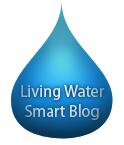Land use activities have the greatest impact on the quality and supply of our water. The health of streams is an indicator of the health of the land and the effectiveness of our stewardship. Only healthy streams can produce the values we want (such as clean water for drinking and recreation, healthy fisheries, adequate water for irrigation, healthy riparian zones, and habitat for wildlife).
Both land and water use planning and management are required to make sure that what happens on our land does not create problems for our water. Land development and watershed protection can be compatible through the use of best practices. Thinking about the health of the stream at the site design and decision making stage is a critical best practice; no-one wants to be responsible for ecological damage or contaminated drinking water.
Supporting watershed planning
Watershed management plans coordinate development and management of water, land and related resources, resulting in benefits to the community, economy and environment. The provincial government will work with communities in order to achieve greater community involvement in planning. This will lead to fewer conflicts in the future, and greater awareness about water issues and watersheds through watershed plans. The provincial government will continue to be accountable for the protection of water resources in the public interest.
We're exploring options to enable more effective and efficient decision-making with broad participation by government and partners.
Creating community development strategies
Healthy riparian zones can effectively store carbon dioxide, help to slow global warming and are vitally important for protecting fish and other aquatic species. Community development strategies will be created to recognize the importance of riparian zones in adapting to climate change. These strategies will be developed with input from developers, planners and local government.
The provincial government will integrate Living Water Smart with the
Climate Action Plan to reflect the essential role healthy streams wetlands, and riparian zones can play in storing carbon in plants and soils; releasing water vapour to naturally cool landscapes; buffering the effects of extreme weather events, and storing and providing water during times of drought.
Smart Infrastructure Funding
The B.C. Ministry of Community, Sport and Cultural Development offers infrastructure funding to local governments wishing to extend their water services to areas served by wells. In order to be eligible for the funding, local governments must implement a water conservation plan and adopt a well closure bylaw, requiring all property owners to close their private wells within 90 days of their property connecting to local government water services. This helps to protect community drinking water systems from potential contamination. In 2008 the Ministry developed a model bylaw to help municipalities through the process. The City of Merritt was one of the first municipalities to implement the model.
For more information about infrastructure funding and the model well closure bylaw, visit the Ministry of Community, Sport and Cultural Development website.
Leading the way
Life-cycle assessments of the ways we construct buildings and communities help us see the costs and benefits over the lifetime of the infrastructure. Developments and re-developments that consider water efficiency, stream health, and smart growth principles will deliver better environmental health and economic returns over the long term.
The B.C. government intends to set an example. In future, all new provincial public buildings will be constructed to Leadership in Energy and Environmental Design (LEED™), Gold or equivalent standards. Existing B.C. government buildings will be retrofitted to make them more water and energy efficient, climate-friendly, and healthier places. Research suggests that a LEED™ Gold building can cost 2-15% more initially but over the life-cycle cost will like be less because of the reduced operation and maintenance costs from improved water and energy efficiency. Government will also restore sections of streams or wetlands in the surrounding landscapes where practical.
Encouraging and fast tracking green development
New thinking about land development practices leads to new benefits. These benefits include more green spaces, improved community vitality, reduced demand for water, and less pressure on infrastructure. Already, building design and technologies are getting better at reducing water and energy use, which helps us respond to our changing climate.
Green developments waiting for provincial environmental approvals will be fast-tracked and given priority. Working with industry and local government, the Province will develop criteria for fast tracking green, water efficient developments, to be included in provincial approval policies and practices. In the future, green building criteria could be used to update building and plumbing codes. Restoring sections of streams or wetlands while developing communities helps store greenhouse gases. Government will provide incentives to developers for the restoration of streams or wetlands.


 The riparian zone is the area between the land and a flowing surface water body. Plants alongside the banks of the water body are called riparian vegetation and are important for the health of the stream and stopping bank erosion.
The riparian zone is the area between the land and a flowing surface water body. Plants alongside the banks of the water body are called riparian vegetation and are important for the health of the stream and stopping bank erosion.
